I live in an 885-square-foot home in a community of floating houses in the Pacific Northwest. Here's what it's really like.
Jodi Monroe

- My partner and I live in a small home floating in the Colombia River in the Pacific Northwest.
- It's part of a community of floating houses, and we've lived there for four years.
My partner and I live in a floating home in the Pacific Northwest.

My partner and I belong to a community of houses floating side by side in the Columbia River. Our house is on the smaller size at 885 square feet, but our neighbors' houses vary in size.
We've lived in our community, or moorage, for almost four years, and we love the water and everything it has to offer.
Here are some common misconceptions and what it's really like to live in a floating house.
It's not a houseboat.
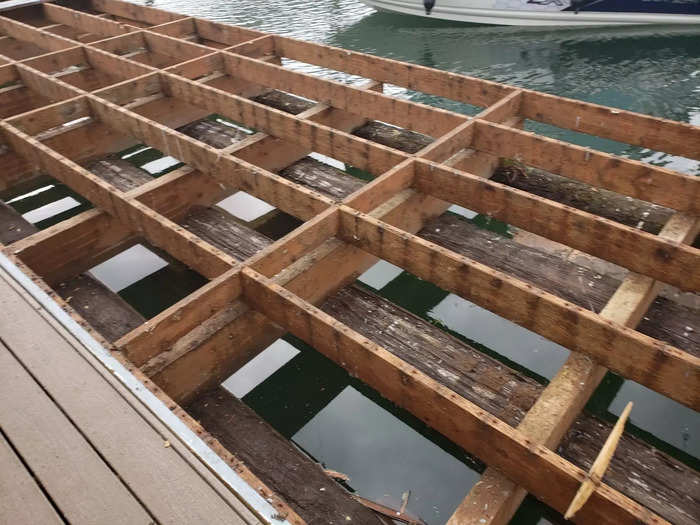
When we tell people about our home for the first time, they often respond, "Oh, you live on a houseboat?"
A houseboat has a motor and moves under its own power. But a floating home is a lot like a house you see on land. The houses in our community come in all shapes and sizes, and they're set on logs and anchored to long poles set deep in the riverbed.
Most of the houses in our moorage float together in long rows, with attached walkways leading to land. Each row is separated by a stretch of water.
We can move our houses around.
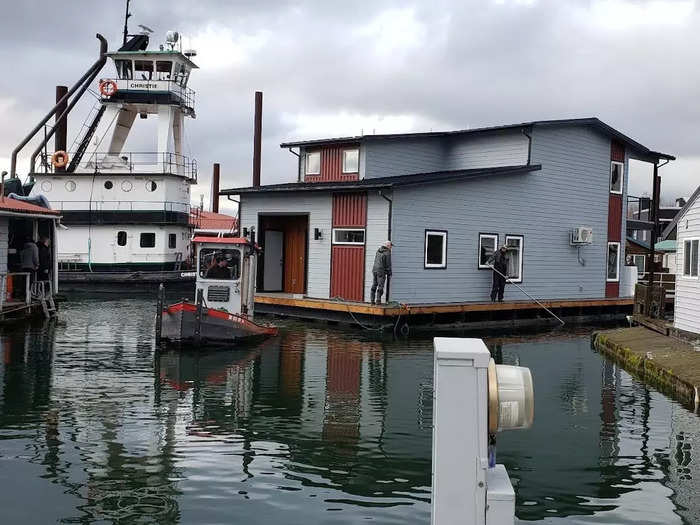
Unlike many houses on land, ours can move around pretty easily.
If we found a different moorage we wanted to live in, we'd float our house to it using a tugboat. A few years ago, the newest house in our neighborhood was floated in by two men on a tugboat with a lot of rope.
If the new house is close to land or difficult to slot in, the rest of the homes in the row are floated out to accommodate it. Thankfully, that doesn't happen often.
Floating homes on the Columbia River can only be safely moved after the current has slowed from the spring thaw.
Standard home maintenance is a bit different for us.
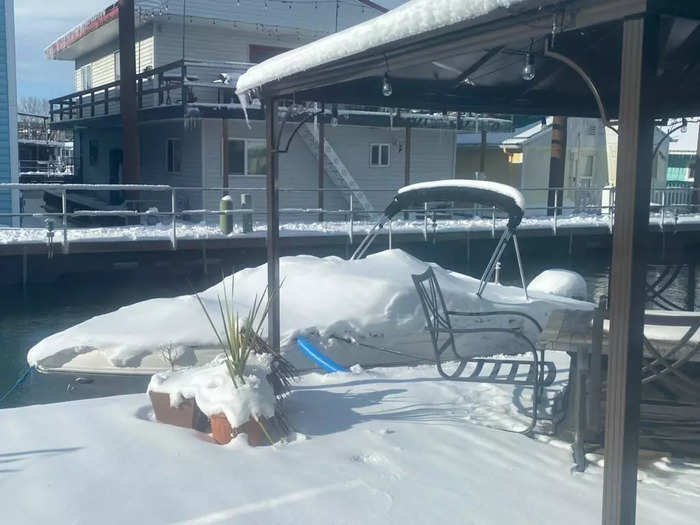
One of our favorite things about living in a floating home is the lack of yard maintenance. We don't have a lawn to mow, leaves to rake, or weeds to pull. But we have flowers and herbs in pots, and some neighbors even have trees potted on their back docks.
We stay vigilant about the temperature, and if it gets below freezing in winter, we have to take some steps to keep our pipes clear.
With floating homes, the pipes run beneath the house and are completely exposed to the elements. We may have to drip water from a faucet and open every cabinet door with plumbing to prevent a burst pipe.
If we get too much snow, we work extra hard to clear our docks and houses. Heavy snow accumulation can cause our homes to tilt. If this happens, the moorage sends out an alert so neighbors can help each other shovel snow and lighten their loads.
Heading to the car takes longer.

Our parking lot is set on land that rises well above our rooftops. This is also the location of our mailboxes, shared green spaces, and community dumpsters.
Every time we run errands, get rid of recycling, or pick up the mail, we have to head down the walkway and up three connecting ramps to get to land.
This is true for dog owners, too. Without backyards, dogs need to be walked up to the grassy spaces for exercise and relief several times a day. Rain, snow, or shine, they make the trek.
Storage is at a premium.
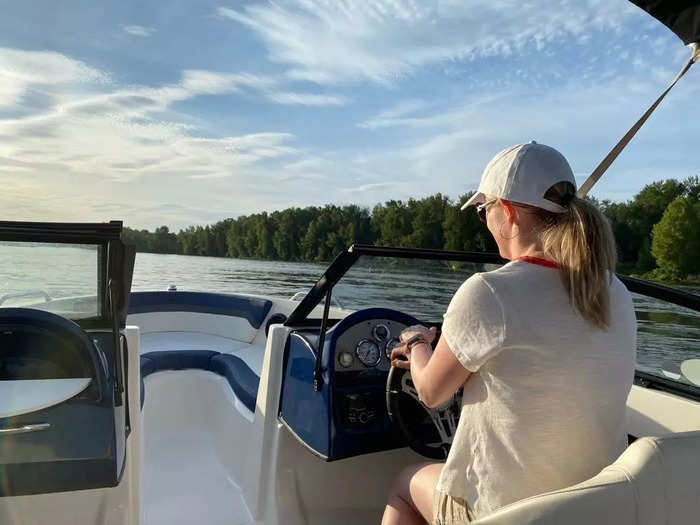
Like in most small homes, every space is maximized and anything we buy has to be evaluated. If we bring something in, we have to decide what's going out.
This isn't too much of a sacrifice for us. We love our small space and the knowledge that everything we have is important to us.
It's been a bit tricky without a garage. But we have a carport with a small attached shed and three large storage boxes around our house for tools, paint supplies, and other odds and ends.
We also have a boat, which provides some extra storage and space for us.
We have easy access to our favorite activities.
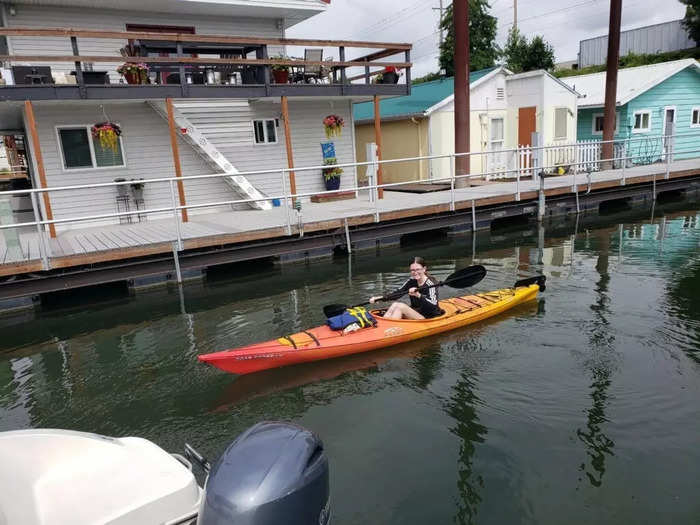
We love the water, so the absolute biggest perk of living in a floating home is being able to enjoy it every day.
Our boat is anchored to our floating dock behind the house — when we want to head out, we simply jump in and go. We don't have to hook up the boat to our car, drive to the river, and wait for our turn on the ramp.
We also have kayaks stored on the side of our house. We slide them out of the covers, drop them in the water, and paddle away.
We're hoping to add paddleboards to the mix this summer.
We wouldn't trade our lifestyle for anything.
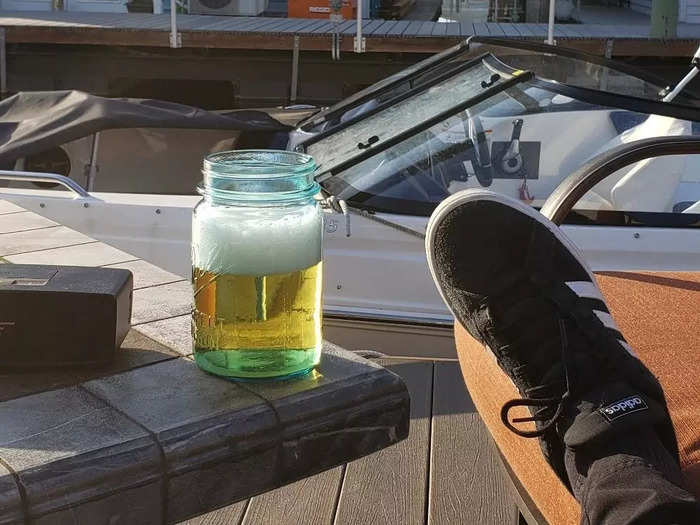
Living on the water has its drawbacks, but for us, the benefits far outweigh them.
We can't imagine living anywhere else.
Popular Right Now
Popular Keywords
Advertisement